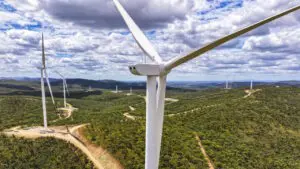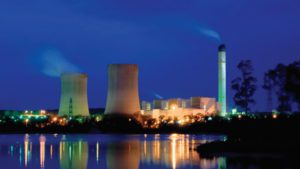An Australia-backed plan to develop a world-leading renewable hydrogen hub in Texas, in the US, is targeting production of more than 2.5 billion kilograms of green hydrogen a year from 60GW of solar and wind.
Austin-based start-up Green Hydrogen International, with the assistance of Sydney-based Energy Estate, this week inveiled plans to create “the world’s largest” integrated green hydrogen production, storage, and transport hub in South Texas.
GHI – which was founded in 2019 – said the massive project would be built in phases, the first of which was expected to commence operations in 2026, backed by 2GW of renewable hydrogen production capacity and two storage caverns at the Piedras Pintas salt dome.
Access to the Piedras Pintas salt dome is a key part of the project, to store the large volumes of renewable hydrogen that the so-called Hydrogen City aims to produce.
As the CSIRO has confirmed in its own study, underground caverns have emerged as the leading option for safe and affordable hydrogen storage at scale, with international experience so far favouring engineered caverns created in thick salt deposits as the test-beds for this theory.
In Germany last year, energy provider EWE completed the first stage of a test project, laying the foundations at a salt dome site in Rüdersdorf near Berlin with the installation of 160 steel pipes at a depth of up to 1,000 meters.
GHI founder and CEO Brian Maxwell told RenewEconomy that while salt caverns suitable for this purpose were relatively rare, globally, the Gulf Cost of America was well endowed, with hundreds potentially available to store hydrogen and hundreds more already used to store natural gas.
“We see salt dome storage as the linchpin of large-scale green hydrogen production as they allow for enormous amounts of hydrogen to be stored… for a long duration,” Maxwell said.
The added bonus of the region’s rich wind and solar resources, and its situation near existing export infrastructure, complete the hydrogen hub checklist.
“Hydrogen City is a project perfectly positioned near low-cost renewable resources, plenty of available land, salt domes, and proximity to the large energy port of Corpus Christi,” said Andy Steinhubl, a former McKinsey senior partner and GHI board member.
“It will be a world cost leader and position GHI to take advantage of the growing demand for green hydrogen.”
GHI says that, eventually, more than 50 caverns could be created at the Piedras Pintas salt dome, providing up to 6TWh of energy storage and turning it into a major green hydrogen storage hub, similar to the role Henry Hub plays in the natural gas market.
As to putting all that stored green hydrogen to use, GHI says negotiations are ongoing on end-use options, including green ammonia for export markets; green ammonia for the fertiliser market, and; feedstock for sustainable aviation fuel.
The company is also looking at combining hydrogen with CO2 at the Port of Brownsville to create a green methane rocket fuel for launch operations in South Texas, as well as using its green hydrogen as a natural gas substitute at power plants.
“We see Hydrogen City becoming one of the largest H2 production centers in the world, supplying many different customers with 100% clean H2 fuel,” said Maxwell.
Energy Estate, which is behind a number of ambitious renewable energy, green hydrogen and pumped hydro storage projects in Australia, said on Friday that it was supporting GHI in the development of the Texas Hydrogen City, as well as on the development of a global pipeline of green hydrogen production and storage projects.
“When the opportunity to develop Hydrogen City… came up in 2021 we immediately understood the rationale for a large-scale integrated project in South Texas feeding green hydrogen into the Corpus Christi energy hub,” Energy Estate’s Simon Currie told RenewEconmomy.
“The storage opportunity is globally significant and can be built out over time as clean generation, green hydrogen production and demand ramps up.”
Currie said the CSIRO report on hydrogen storage options in Australia identified potential locations for storage in salt caverns, but the domes and deposits weren’t positioned as close to ports and the renewable resource as some other places in the world.
“We are working with players like Abergeldie on alternatives for Australia such as man made caverns and pipeline storage options,” he said.
“Depleted oil and gas fields are a possible option but we believe they will be better suited for e-fuels storage, at least in the medium term.”










